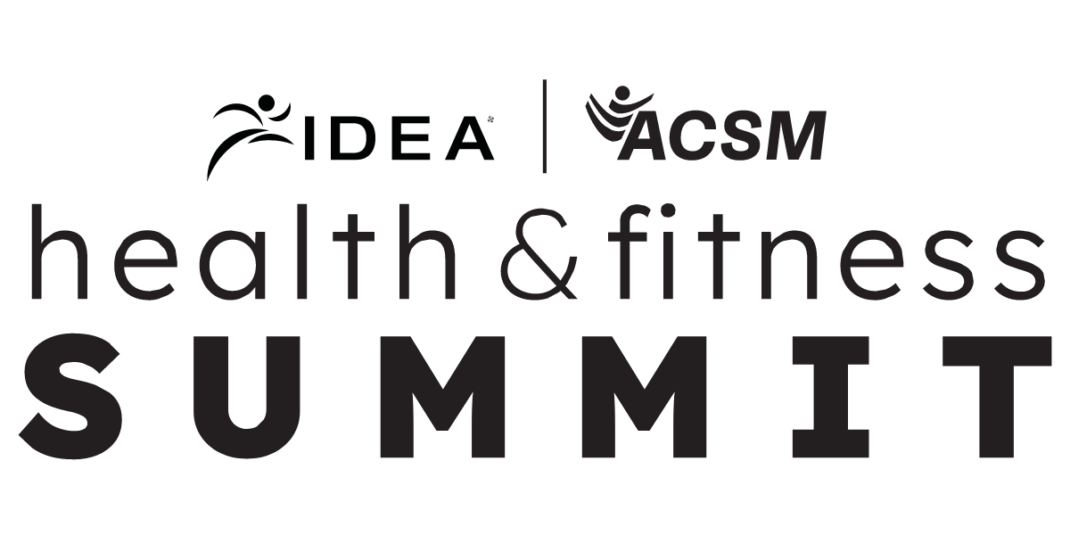Nutrition 2.0
What personal trainers should know about nutrition tools on Web 2.0.

Clients often ask fitness professionals questions about nutrition, since the topic is closely related to exercise. While it may be appropriate to educate clients about foods and diets, sometimes it is best to defer to a dietitian (Muth 2009). But when a nutrition expert is not on-hand or clients cannot afford one, they may turn to the Web for answers.
Over 60% of American adults get their health information from the Internet, and half of them say it changes the way they think about diet, exercise or stress management (PEW 2009). With so many contradictory health messages on the Web, it helps for clients to have a list of recommended websites they can reference. The purpose of this article is to expand a personal trainer’s list of online nutrition resources. Since not all nutrition topics fall within a trainer’s area of expertise, knowing the latest tools available on the Web may help trainers direct clients to the appropriate resources.
Read on to discover which websites are reputable and recommended by dietitians. And learn the importance of suggesting additional resources to enhance your clients’ knowledge about nutrition.
Since the advent of Facebook, Twitter™ and YouTube, organizations have had to adapt to the online culture by publishing content in smaller portions via multiple formats. Websites like the U.S. Department of Agriculture’s (USDA) MyPyramid (www.mypyramid.gov) and the American Dietetic Association (www.eatright.org) now deliver information via podcast, blogs, tweets, wall posts, RSS feeds and interactive Web games. Rather than sending clients to a website for more information (which may leave them feeling overwhelmed or frustrated), suggest they follow these organizations’ Twitter feeds or subscribe to their daily blogs as a starting point.
Short videos and podcasts are another way clients can learn about hot topics and nutrition fundamentals. Natalie Butler, RD, LD, a registered dietitian from Austin, Texas, has over 50 informational videos posted on her website (www.nutritionbynatalie.com/videos). Topics range from basics of nutrition to benefits of breast milk. Monica Reinagel, a board-certified licensed nutritionist and professionally trained chef, serves up a regular dose of nutrition via a podcast called “Nutrition Diva™: Quick and Dirty Tips for Eating Well and Feeling Fabulous” (nutritiondiva.quickanddirtytips.com). Every week she covers a series of topics from healthy eating to weight loss. Clients can easily watch or listen to these during a cardio machine warm-up, since most are less than 10 minutes long.
If your clients follow the “learn-by-doing” approach to exercise, suggest they do the same when learning new concepts in nutrition.
Playing online games and taking interactive quizzes are fun alternatives to reading articles and blog posts. They can spice up the way clients learn food facts. The Pacific Science Center’s Nutrition Café (exhibits.pacsci.org/nutrition/nutrition_cafe.html) has games like “Nutrition Sleuth” (where the object is to find the missing nutrient) and Q&A games like “Grab a Grape.”
The U.S. Department of Health and Human Services and the National Institutes of Health have an eye-opening quiz called “Portion Distortion” (hp2010.nhlbihin.net/portion/) that shows (in calories) just how much portion sizes have increased over the last 20 years. Teach clients how to read nutrition labels by sending them to “Interactive Nutrition Label” on the Health Canada website (www.hc-sc.gc.ca). The nutrition department at the University of Massachusetts, Amherst, also hosts a series of more advanced nutrient quizzes (available as free PowerPoint downloads). Challenge your clients with the Nutrition Jeopardy Quiz (umass.edu/diningservices/nutrition/games), or integrate the quizzes as part of a workshop or a small-group presentation.
Web-based calculators can help clients understand the variables involved in making dietary decisions. One of these tools can estimate recommended fluid intake after various workouts (www.gssiweb.org/FluidLoss.aspx), while another can calculate daily nutrient needs based on anthropometric measures and activity levels (www.nutritiondata.com/tools/calories-burned). HealthStatus.com offers a selection of interactive tools that can help clients learn what it takes to lose 1 pound (www.healthstatus.com/calculate/lop) or how to approximate their basal metabolic rate based on their lifestyle (www.healthstatus.com/calculate/dee). Most calculators are limited in function and should not replace clinical nutrition assessments.
In the past few years, online food journals have probably gained the most attention among Web users. What was once a cumbersome assessment tool that only nutrition experts used to analyze diet has turned into free, user-friendly, Web-based software that comes fully equipped with meal plans, sample recipes and social networking capabilities. Forgetting to input meals or not knowing a food’s nutrition facts is now less of a challenge in keeping food journals accurate. Online food databases (linked to the USDA’s database) and “calorie counters” have made meal tracking a breeze.
The USDA Nutrient Database (which is also available to download for use offline) has information on thousands of different food items. It can pull up the nutrition facts for individual foods or produce a detailed list of foods by specific nutrients (www.ars.usda.gov/Services/docs.htm?docid=8964). Nutrition Data (www.nutritiondata.com) is another resource for food facts. It displays a food’s fullness factor, estimated glycemic load, inflammation factor, nutrient balance, daily values chart and protein quality.
Although these last two sites are excellent for retrieving detailed data about a meal, they may not be great at tracking a user’s food history. Online food journals are much better for storing data and maintaining daily food records. The popular food trackers, such as My Calorie Counter (www.my-calorie-counter.com) FitDay (www.FitDay.com) and The Daily Plate (www.thedailyplate.com), can be joined free of charge, and they have features that allow users to save data about their favorite foods or meals, create and share shopping lists, and estimate daily caloric needs based on weight loss/gain goals. For clients who have a hard time remembering to input meal information, mobile applications for phones or handheld devices make food logging more convenient. Some “apps” are stand-alone (check out “Dietician” at www.iphoneapplicationlist.com/2009/01/20/dietician/), and others are extensions of their online services.
For instance, the mobile tracking feature from StartYourDiet.com allows users to track their diet “on-the-go” via cell phone, PDA, Sony PlayStation Portable, Nintendo DSi and Wii! The “Food Scanner” iPhone app created by the developers at DailyBurn, another popular health tracking site, uses the iPhone’s camera feature to scan a food’s UPC label, then inputs the nutrition facts directly into the client’s online food journal (www.dailyburn.com/foodscanner).
[Note: Online food journals that also include a daily physical activity tracker can help clients estimate net caloric cost. However, if clients want to track their workouts and fitness goals in more detail, you may want to suggest an exercise-centric tracker instead (refer to “Online Fitness Networks” in the September 2008 issue of IDEA Trainer Success for more).]
Research suggests that keeping a dietary log or food journal can double a client’s weight loss (Hollis et al. 2008). Recommending that a client start a log or journal may help that person gain greater insight into his or her food choices and eating behaviors. However, you may want to leave the diet analysis to the nutritional experts. “These [sites] may be a good starting place,” advises Kristen Tice, ACE-CPT, a dietetic graduate student intern at SUNY College at Oneonta. “But it is always best to check with a nutrition professional, such as a registered dietitian, to make sure that all bases are covered.” Those who have specific health restrictions or are taking medications should note that these sites do not adjust for special conditions or account for food–drug interactions when recommending foods and meal plans.
Regardless of how connected people may seem to their online world, when it comes to needing information about health-related topics 86% will still turn to a professional (PEW 2009). Next time your clients are hungry for more on nutrition, you can bet that the resources you recommend will give them more information than they can chew.
Before recommending a list of nutrition websites, set your clients’ expectations. Sorting a site’s database of articles or reading through much research can be time-consuming. The four tips below might make the search less overwhelming.
- Offer Navigational Cues. Sites filled with a lot of links, ads, tabs, menus, sidebars, badges and buttons can be confusing. Give clients a head start by telling them where they are likely to find the information they’re seeking.
- Point to Appropriate Content. Sites often separate content for different audiences, such as health professionals, educators, researchers and journalists. Send clients to the consumer section, where the content might be most relevant to them.
- Suggest Multiple Key Terms or “Tag” Words. Clients may not always know the technical words or scientific terminology. Recommend that they use multiple keywords during their search to ensure they find information under the correct topic.
- Send Clients to Members-Only Sites With a Disclaimer. If clients want to read the research, let them know that access to scholarly journals and academic studies may be limited to researchers or health professionals. Clients might be able to see only the abstracts or summaries.
Below is a list of recognized nutrition websites that clients may find useful in their search for answers to common nutrition questions:
- www.MyPyramid.gov
- www.EatRight.org
- www.RD411.com
- www.Diabetes.org
- www.HeartHealthyOnline.com
- www.ConsumerLab.com
- www.FoodInsight.org
- www.Cochrane.org
- www.MayoClinic.com
Generally, sites ending in -.org, -.edu, or -.gov have content that comes from reputable sources. But if clients do venture out to other sites, suggest they watch this video tutorial on evaluating online health information: www.nlm.nih.gov/medlineplus/webeval/webeval.html.
References
Muth, N. D. 2009. The elephant in the room: Nutrition scope of practice. IDEA Fitness Journal, 8 (6), 40-47.
PEW Internet & American Life Project. 2009. The social life of health information. http://pewinternet.org/Reports/2009/8-The-Social-Life-of-Health-Information.aspx; retrieved Dec. 16, 2009.
Biray Alsac, MS
Biray Alsac, MS, is the owner of FITTmaxx Institute, a consulting company for health organizations and fitness/wellness professionals interested in learning how to integrate Web-based tools and interactive technologies (exergames) into their programming. She holds a masterÔÇÖs degree in exercise and wellness. Certification: ACE Education provider for: ACE





